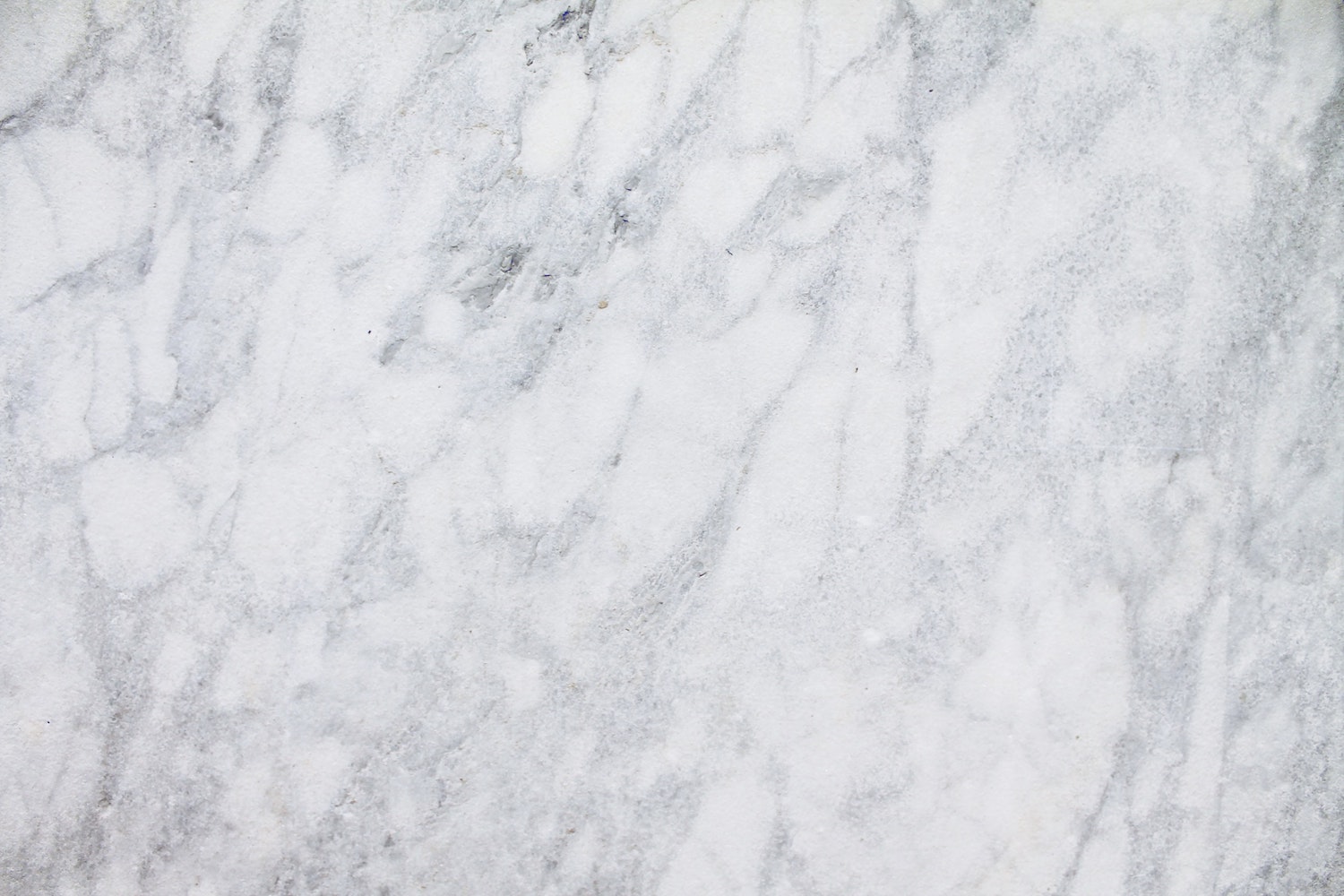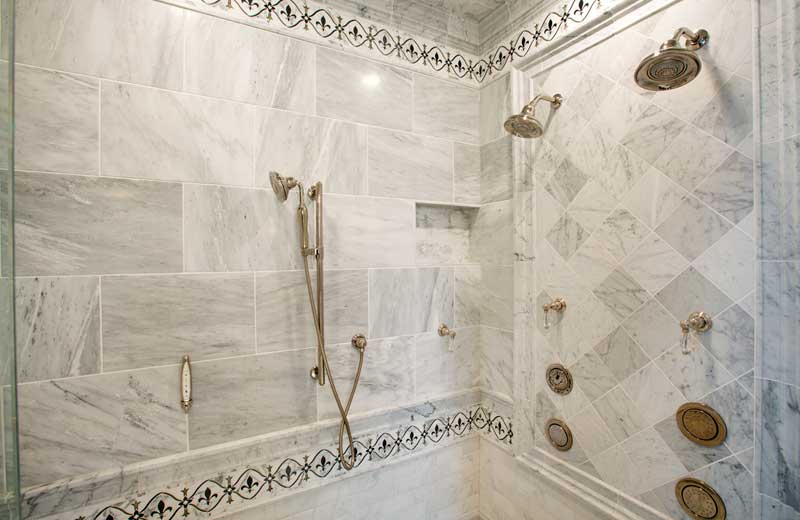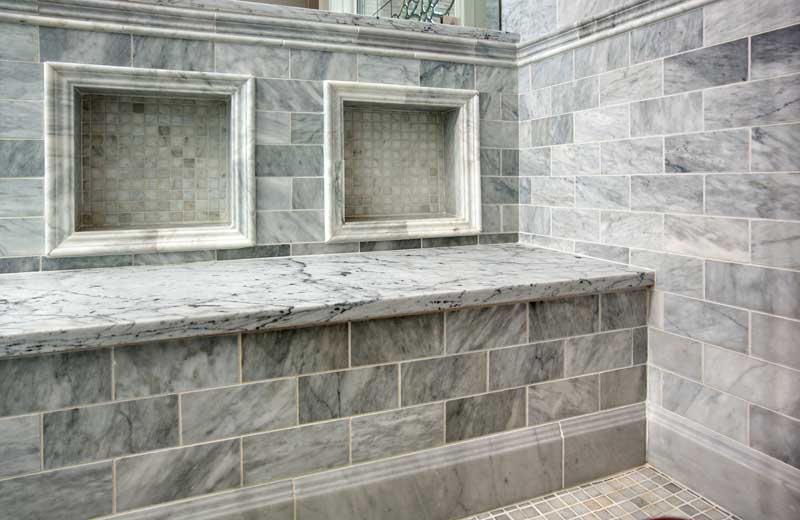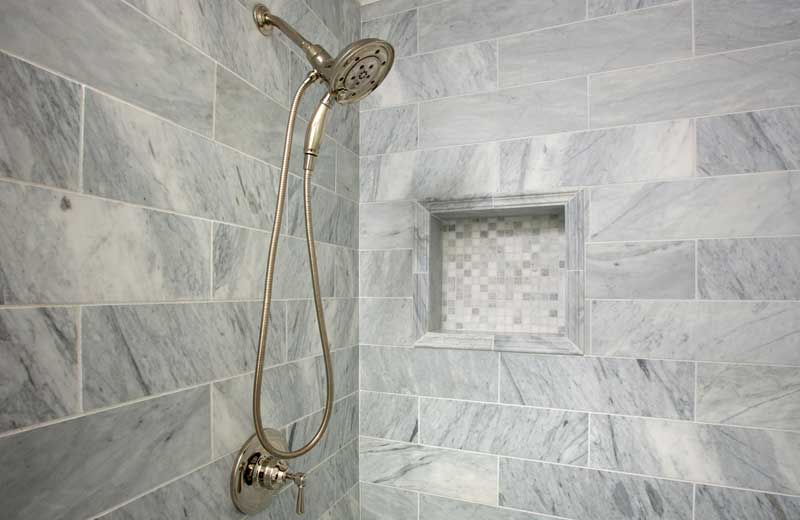
For years, classic veined marble has been used in public and private vicinities. However, marble countertops and tiling has grown popular in homes, and more specifically bathrooms, over the past few years. With demand being high and interiors being redesigned, our team thought there might be a few things to keep in mind when considering the use of marble in a bathroom.
 First, marble is a soft stone and absorbent. This means products like hairspray, gel, and makeup residue can stain the stone. Be aware when using these products to avoid spilling or try to have the marble sealed upon installation. In addition to applying sealant, home improvement stores also sell spot-treatment spray cleaner. Sealant won’t prevent all mistakes but it can buy you some time if, in fact, you do spill.
First, marble is a soft stone and absorbent. This means products like hairspray, gel, and makeup residue can stain the stone. Be aware when using these products to avoid spilling or try to have the marble sealed upon installation. In addition to applying sealant, home improvement stores also sell spot-treatment spray cleaner. Sealant won’t prevent all mistakes but it can buy you some time if, in fact, you do spill.
 Marble is affected by acidity. Materials like lemon and cleaning products could be a danger to your counter tops and tiling. It’s a good idea to test lotions and other bathroom supplies on samples of marble to see if there is any kind of reaction. For proper cleaning, be sure to try and use pH-neutral cleaner. Your remodeling company might also have some suggestions for protecting your new marble.
Marble is affected by acidity. Materials like lemon and cleaning products could be a danger to your counter tops and tiling. It’s a good idea to test lotions and other bathroom supplies on samples of marble to see if there is any kind of reaction. For proper cleaning, be sure to try and use pH-neutral cleaner. Your remodeling company might also have some suggestions for protecting your new marble.
 Iron can turn to rust. Since marble contains minerals, its iron content can turn to rust in a bathroom. The iron that cannot be seen on the initial install can discolor from humidity and moisture. Preventing rust in marble is as simple as drying wet counters and flooring and, again, applying a sealant. In order to remove staining already there, you should consider using a poultice solution.
Iron can turn to rust. Since marble contains minerals, its iron content can turn to rust in a bathroom. The iron that cannot be seen on the initial install can discolor from humidity and moisture. Preventing rust in marble is as simple as drying wet counters and flooring and, again, applying a sealant. In order to remove staining already there, you should consider using a poultice solution.All in all, the best way to take care of your bathroom marble is to consult your contractor or home improvement specialist. They know how to clean marble and what proper marble cleaner to use. We hope you will consider these three tips before beginning your bathroom redesign, and, as always, be sure to contact us for all your remodeling needs.
By: John Virostko, 3D Designer
The best way to learn about Dream Baths and your upcoming project is to reach out and talk to one of our designers.
Get Started Learn More